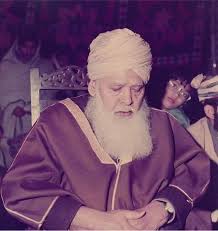Ahmad_Saeed_Kazmi
Ahmad Saeed Kazmi
Sunni Islamic Scholar, Sufi
Syed Ahmad Saeed Kazmi (13 March 1913 – 4 June 1986, Urdu: سید احمد سعید کاظمی) was a Pakistani Islamic scholar and Sufi who belonged to the Barelvi movement of Sunni Islam.[1] He migrated to Multan in 1935 from Amroha.[2][3] He is known for his contribution to the Pakistan Movement, Urdu translation and Tafseer of Quran, and Dars-e-Hadith.[4] His tomb sits next to Multan's 18th century Shahi Eid Gah Mosque.[5][6]
This article needs additional citations for verification. (March 2022) |
